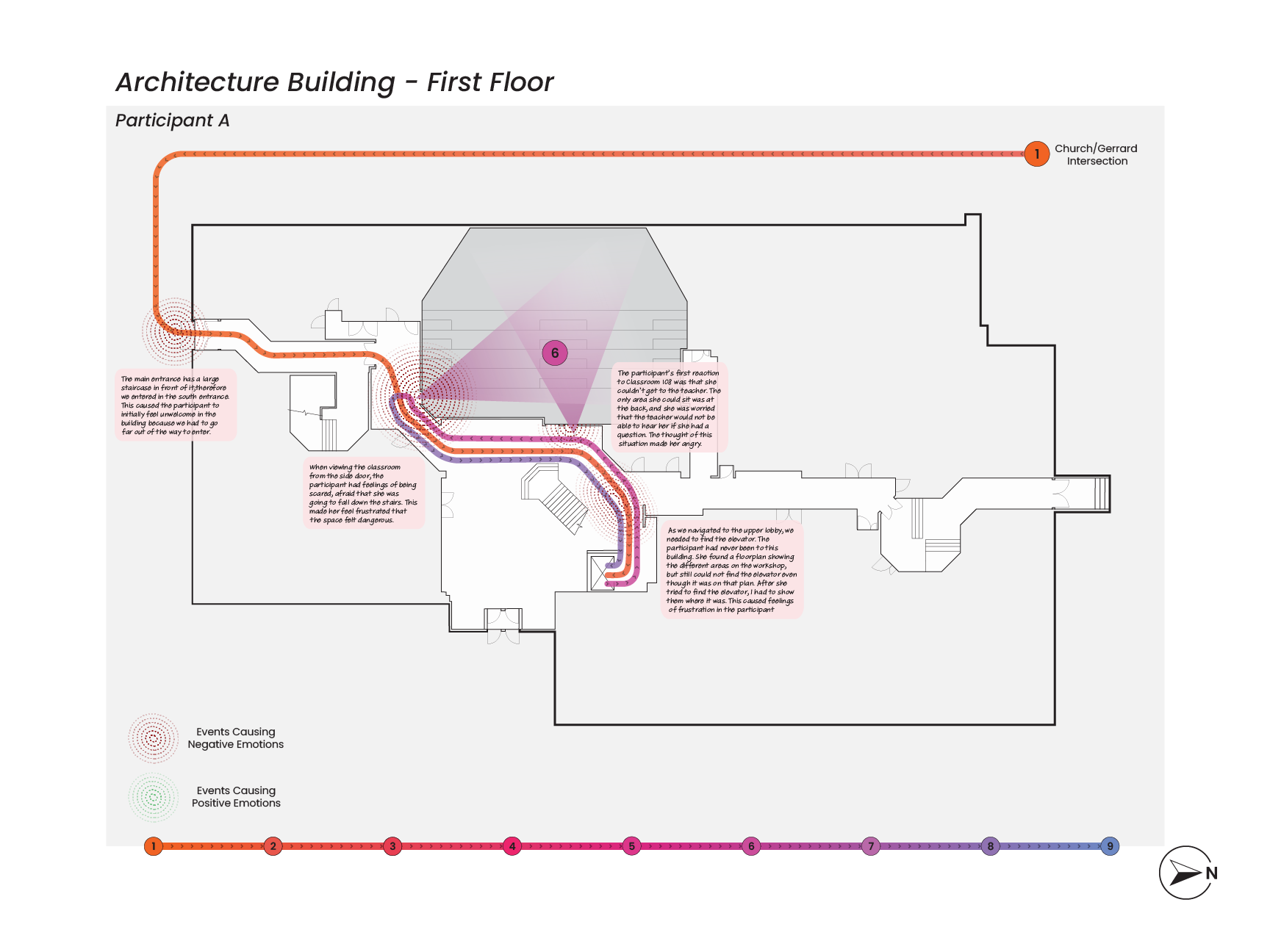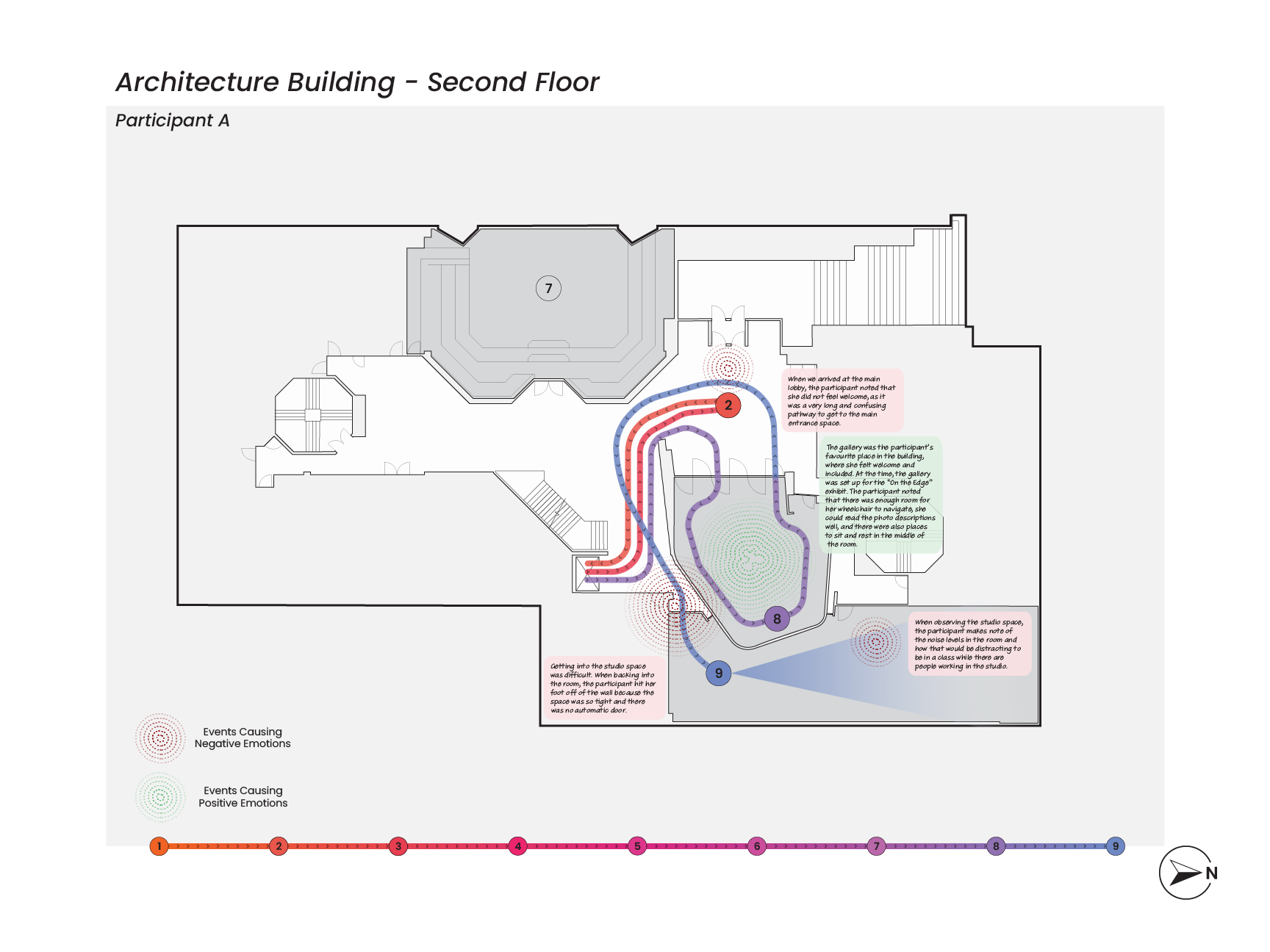MASTER OF ARCHITECTURE
Hannah Robertson—Ontario Association of Architects Exceptional Leadership Through Design Excellence: Equity, Diversity & Inclusion (EDI) and/or Truth & Reconciliation Award
![]()
Hannah Robertson—Ontario Association of Architects Exceptional Leadership Through Design Excellence: Equity, Diversity & Inclusion (EDI) and/or Truth & Reconciliation Award

About the Award
The Ontario Association of Architects Exceptional Leadership Through Design Excellence: Equity, Diversity & Inclusion (EDI) and/or Truth & Reconciliation Award:
To recognize two students with exemplary work related to the topics of Equity, Diversity & Inclusion (EDI) and/or Truth & Reconciliation, in any year of the undergraduate or graduate Architectural Science programs. This award is intended to recognize exceptional leadership through design excellence combined with exemplary approaches to projects and/or assignments as they relate to Equity, Diversity, & Inclusion and/or Truth and Reconciliation.
As someone with a disability, I have seen the effects of an inaccessible world. As an architecture student, I have also seen how little the experiences of people with disabilities are taken into account in both architectural practice and architectural education. It is because of these perspectives that I have taken on the topic of inclusive design for my thesis, titled “Beyond Accessibility: Integrating Disability Perspectives Towards Inclusive Architecture”. People with disabilities have a unique perspective on the design process that is often overlooked and not fully understood within architectural practice. Stemming from the medical and social models, many current design processes and accessibility standards encourage a bare minimum approach to designing for disability. By integrating the perspectives of people with disabilities into the design process, I aim to transform the built environment from one that merely includes standard accessibility practices to one that truly fosters inclusivity. With a basis in disability theory, the history of accessibility and disability rights movements, and an analysis of accessibility standards, this provides the foundation for the integration of firsthand accounts through interviewing people with disabilities. Collectively giving insight into the next steps towards inclusive architecture, to improve the experience of people with disabilities.
Throughout my research, I have maintained that it is important to hear directly from people with disabilities. I want to hear directly from people with disabilities and learn about how they interact with the built environment, and what they feel while they are in a space. This led me to Go-Along interviews, which are participatory interviews that include moving through a space with the interviewee, observing how they interact with the built environment around them, and asking them questions to learn more about what they are thinking and feeling in the situation. As shown in the images below, I travelled through the Architecture Building with the participants, talking with them about how the accessibility of the space affected their emotions.
As this is a topic I am personally interested in outside of my thesis research, I am also involved in other projects or groups interested in exploring. The first is that I am involved in the Community Student Engagement Group for Accessibility (CSEGA), which is a space where students and employees of TMU who are passionate about accessibility gather to discuss their experiences as well as their varying initiatives surrounding the advancement of the disability awareness and accessibility movements. The second is that I am involved in planning an upcoming Building Equity in Architecture Toronto (BEAT) Forum on Rethinking Accessibility with Jennifer Esposito and other BEAT organizers and volunteers. The third is that I am a Research Assistant for Leila Farah, where we are exploring accessibility on Toronto’s Waterfront as a part of the Quality in Canada’s Built Environment research team.
Throughout all of these efforts, I hope to contribute a small part to increasing awareness of the experiences of people with disabilities and continue the discussion of how we can improve inclusivity in the built environment.
I’m truly grateful for this recognition and support as I pursue this research that means so much to me, and acknowledges the profound impact that the built environment has on people with disabilities.
The Ontario Association of Architects Exceptional Leadership Through Design Excellence: Equity, Diversity & Inclusion (EDI) and/or Truth & Reconciliation Award:
To recognize two students with exemplary work related to the topics of Equity, Diversity & Inclusion (EDI) and/or Truth & Reconciliation, in any year of the undergraduate or graduate Architectural Science programs. This award is intended to recognize exceptional leadership through design excellence combined with exemplary approaches to projects and/or assignments as they relate to Equity, Diversity, & Inclusion and/or Truth and Reconciliation.
As someone with a disability, I have seen the effects of an inaccessible world. As an architecture student, I have also seen how little the experiences of people with disabilities are taken into account in both architectural practice and architectural education. It is because of these perspectives that I have taken on the topic of inclusive design for my thesis, titled “Beyond Accessibility: Integrating Disability Perspectives Towards Inclusive Architecture”. People with disabilities have a unique perspective on the design process that is often overlooked and not fully understood within architectural practice. Stemming from the medical and social models, many current design processes and accessibility standards encourage a bare minimum approach to designing for disability. By integrating the perspectives of people with disabilities into the design process, I aim to transform the built environment from one that merely includes standard accessibility practices to one that truly fosters inclusivity. With a basis in disability theory, the history of accessibility and disability rights movements, and an analysis of accessibility standards, this provides the foundation for the integration of firsthand accounts through interviewing people with disabilities. Collectively giving insight into the next steps towards inclusive architecture, to improve the experience of people with disabilities.
Throughout my research, I have maintained that it is important to hear directly from people with disabilities. I want to hear directly from people with disabilities and learn about how they interact with the built environment, and what they feel while they are in a space. This led me to Go-Along interviews, which are participatory interviews that include moving through a space with the interviewee, observing how they interact with the built environment around them, and asking them questions to learn more about what they are thinking and feeling in the situation. As shown in the images below, I travelled through the Architecture Building with the participants, talking with them about how the accessibility of the space affected their emotions.
As this is a topic I am personally interested in outside of my thesis research, I am also involved in other projects or groups interested in exploring. The first is that I am involved in the Community Student Engagement Group for Accessibility (CSEGA), which is a space where students and employees of TMU who are passionate about accessibility gather to discuss their experiences as well as their varying initiatives surrounding the advancement of the disability awareness and accessibility movements. The second is that I am involved in planning an upcoming Building Equity in Architecture Toronto (BEAT) Forum on Rethinking Accessibility with Jennifer Esposito and other BEAT organizers and volunteers. The third is that I am a Research Assistant for Leila Farah, where we are exploring accessibility on Toronto’s Waterfront as a part of the Quality in Canada’s Built Environment research team.
Throughout all of these efforts, I hope to contribute a small part to increasing awareness of the experiences of people with disabilities and continue the discussion of how we can improve inclusivity in the built environment.
I’m truly grateful for this recognition and support as I pursue this research that means so much to me, and acknowledges the profound impact that the built environment has on people with disabilities.




